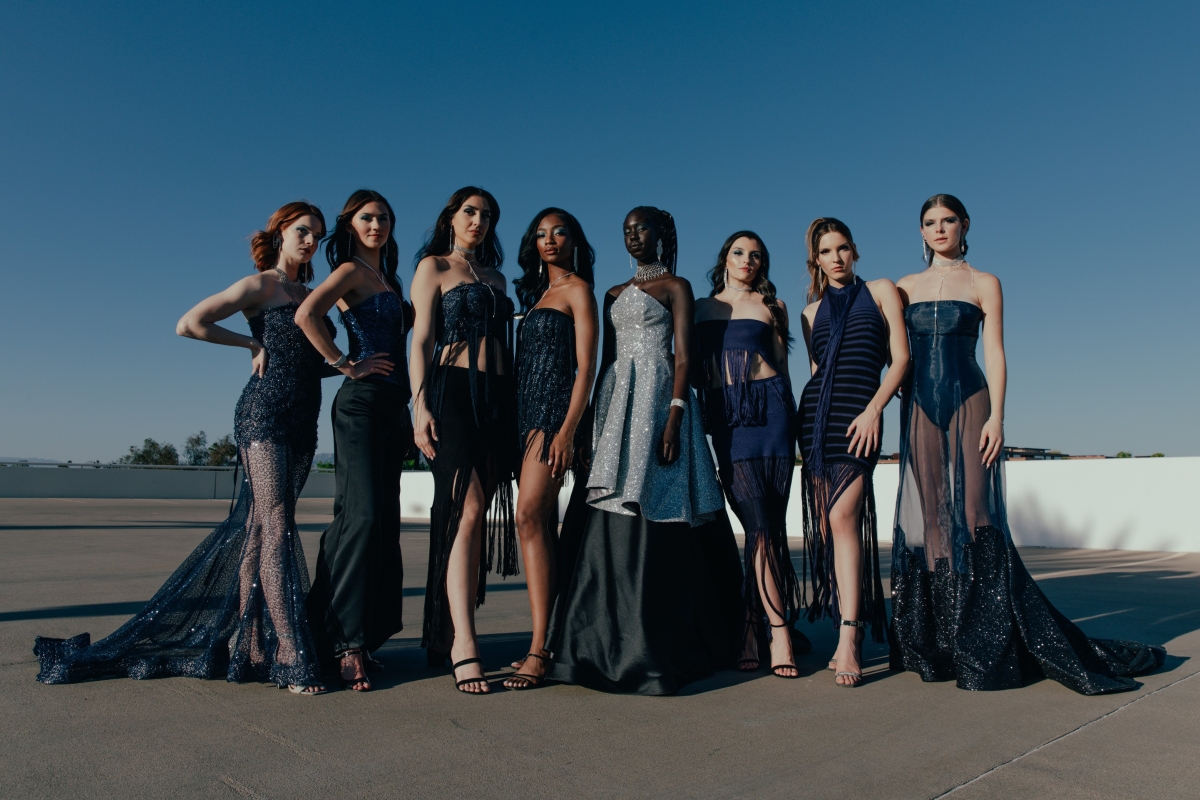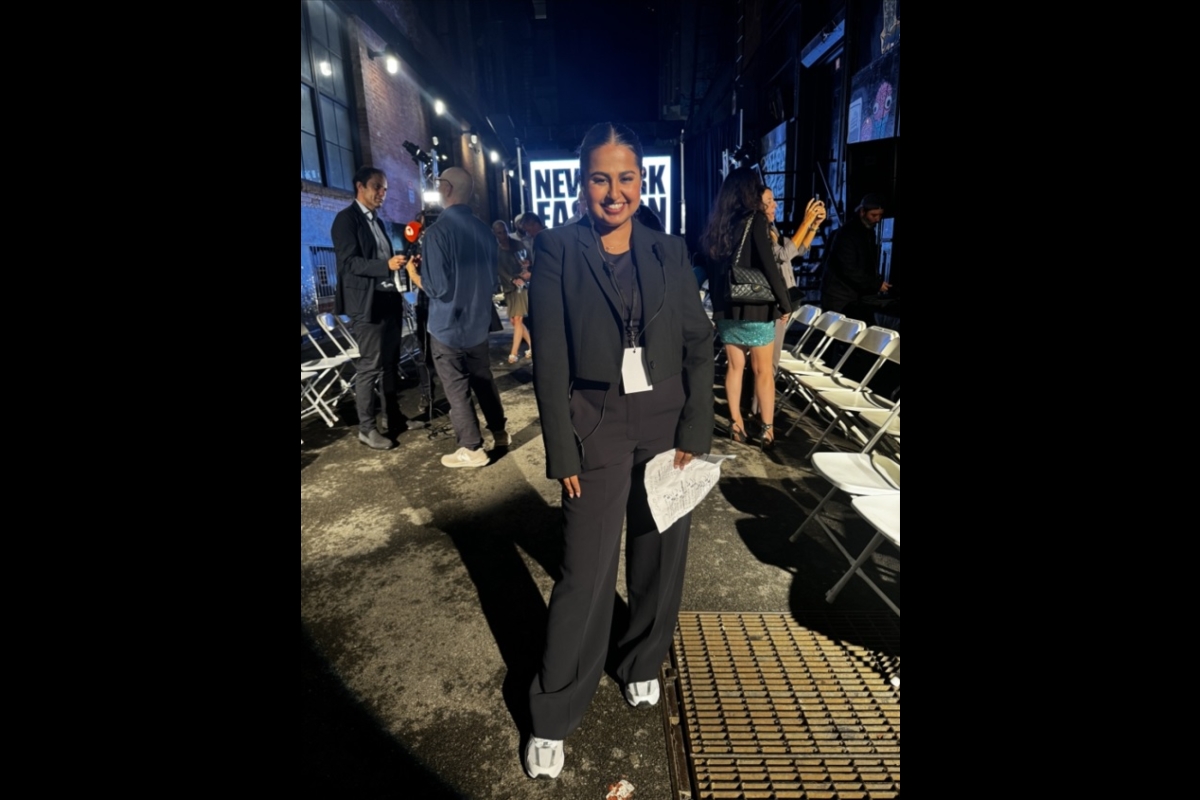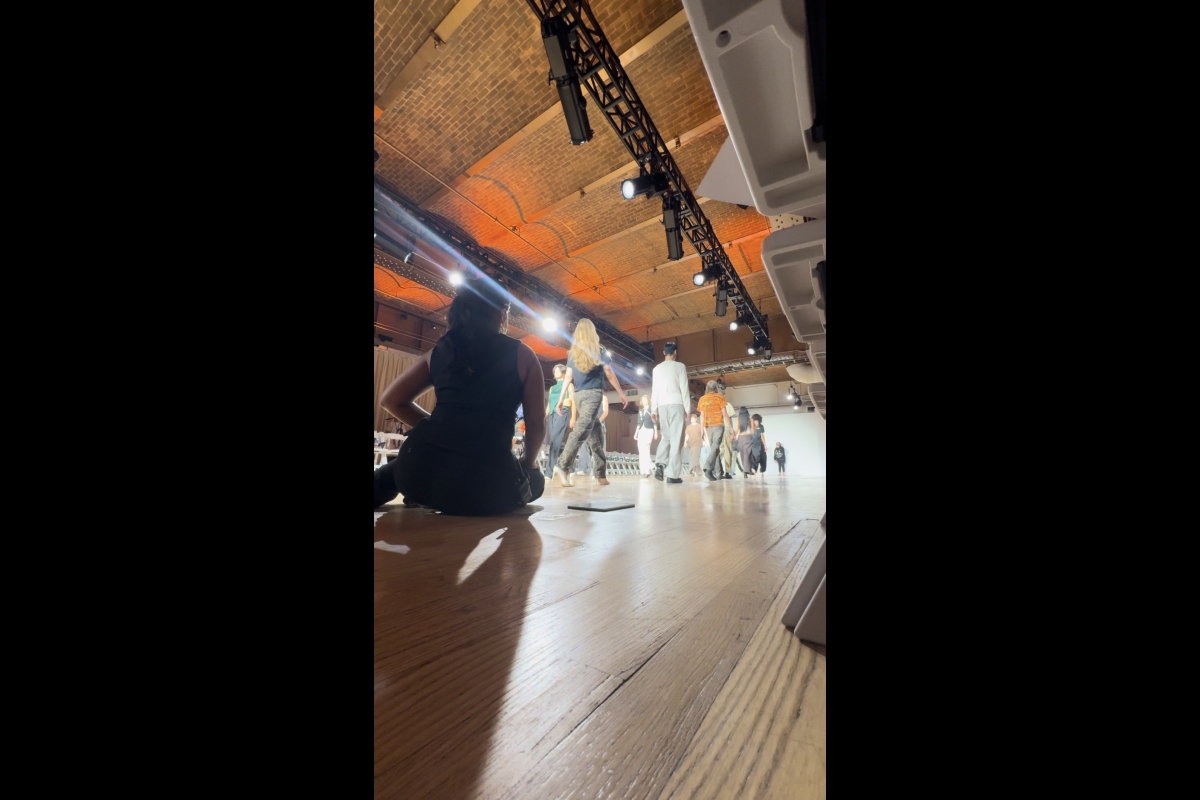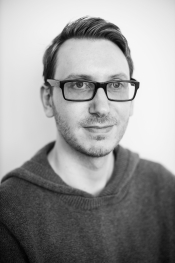ASU FIDM shows prepare 2 Sun Devils for work at New York Fashion Week

Maya Mukherjee, who graduated from ASU in May with a degree in marketing and digital communication and a minor in fashion, worked backstage production for seven shows at New York Fashion Week. She secured the job through connections she made while she was a student at ASU. Photo courtesy of Maya Mukherjee
Two Arizona State University Sun Devils recently experienced the thrill and glamour of New York Fashion Week, where they were prepared to succeed thanks to their ASU FIDM background.
Alexander Diesner, a senior majoring in fashion design, and Maya Mukherjee, who graduated from Arizona State University in May, both worked behind the scenes at New York Fashion Week earlier this month.
Diesner, who is based at the Downtown Phoenix campus, had an internship with the fashion designer Christian Siriano this past summer and was invited back to work Siriano’s runway show on Sept. 6.
“I got to work with Christian, and I got a lot of affirmation about the way I design, which reassured me that I’m doing a good job,” he said.
Mukherjee, who earned a degree in marketing and digital communication with a minor in fashion, worked backstage production for seven runway showsBad Binch Tongtong, Custo Barcelona, Todd Snyder, Dennis Basso, Private Policy, Untitled Co. and SHAO New York throughout the event.
New York Fashion Week is held once in the fall, to showcase clothing designs for the spring, and once in the spring, to highlight the fall collections. Dozens of runway shows are held, along with related events.
“It’s the pinnacle moment for the fashion industry, where everyone comes together and new trends are set,” said Dennita Sewell, founding director of ASU FIDM and a professor of practice in the school.
“It’s a mechanism that is really a concentration of the industry.”
Both Diesner and Mukherjee said that their experience with the annual ASU FIDM fashion show “Uncertainty” prepared them for New York Fashion Week.
Sewell said that the ASU FIDM shows are professionally produced in order to prepare the students for work in the industry.
“That’s why we set it up that way, so students can go on and understand professional practices,” she said.
“I’m happy to hear that they were prepared, but I’m not surprised.”
As a student, Mukherjee worked as a backstage producer for three “Uncertainty” shows.
“I did casting, fitting, working with the student designers, getting the models in line and making sure they’re in hair and makeup on time.
“They really trusted me with this big production, and that gave me the confidence to do it on a bigger scale. There’s no standing around saying, ‘What do I do?’
“ASU prepared me and taught me what to expect.”
Mukherjee created a network of contacts that got her work with several public relations and event production agenciesPeople’s Revolution, Silhanek LLC, Tara Rahek Productions, and her connection with A-Game PR allowed her to attend a New York Fashion Week event on the floor of the New York Stock Exchange that honored Black creatives.
She said the New York shows — a job she got through an internship she had last spring — had constant photography and videography, making them more chaotic than the ASU FIDM presentations.
“But I do thrive in those high-pressure environments,” she said.
Students majoring in fashion are required to have an internship, and ASU FIDM has a career services staff to help with that.
Diesner actually got his internship on his own by applying through Christian Siriano’s website.
“I had been following him for years, ever since ‘Project Runway,’ and I love his work,” he said.
Diesner sent Siriano’s team some photographs of his own designs, and after several remote interviews, he got the internship.
“What Alex did — following his heart and pursuing the internship of his dreams — is absolutely one way that can happen,” Sewell said.
Students who seek out internships on their own also get support on things like proofreading resumes, coaching for interviews and strategizing the financial piece, she said.
Most days during his internship, Diesner traveled into the Garment District of New York.
“I got to do a lot of sourcing of materials and trim and anything we needed that day, and I also started sourcing for the collection that debuted at New York Fashion Week,” he said. He also did some cutting and sewing.
And he learned about the business of fashion.
“I learned what it takes to truly run an atelier in New York City,” he said.
“Everything that holds the Christian Siriano label is made in New York City. The fabrics are sourced there and the sewing is done in the studio.
“That was so fantastic to see right now, as there’s so much uncertainty surrounding the fashion industry as production has moved away.”
He said the backstage experience of the Siriano show was similar to the ASU FIDM shows, in coordinating the models, dressers and hair and makeup artists, but was quicker paced.
“It was fabulous to see the collection from start to finish,” he said.
“There were amazing textures and textiles and great silhouettes.”
Both Sun Devils got to experience what it’s like for a young person just starting out in New York.
Mukherjee stayed with a friend and her several roommates in a Lower East Side apartment.
“It was an incredibly humbling experience,” she said. “But it definitely gave me perspective on what it’s like living in New York in your 20s.”
During his summer internship, Diesner stayed in an Airbnb in Newark, New Jersey, without a kitchen, which was difficult because he had to eat out for every meal. But he learned to navigate the transit system.
“I had never been outside of the West Coast, and going there and experiencing a whole different lifestyle, you think it’s really scary, and it was, but once I got there, I fit right in with the flow of the city,” said Diesner, who plans to start a master’s degree program in New York next fall.
“I really felt like I belonged there.”
More Sun Devil community

A champion's gift: Donation from former Sun Devil helps renovate softball stadium
Jackie Vasquez-Lapan can hear the words today as clearly as she did 17 years ago.In 2008, Vasquez-Lapan was an outfielder on Arizona State University’s national championship-winning softball team,…

Student-led business organization celebrates community, Indigenous heritage
ASU has seen significant growth in Native American student enrollment in recent years. And yet, Native American students make up less than 2% of the student population.A member of the Navajo Nation,…

Remembering ASU physical chemist Andrew Chizmeshya
Andrew Chizmeshya, a computational chemist and materials scientist whose work spanned over three decades at Arizona State University, died on March 7 at the age of 63.A dedicated mentor and cherished…





